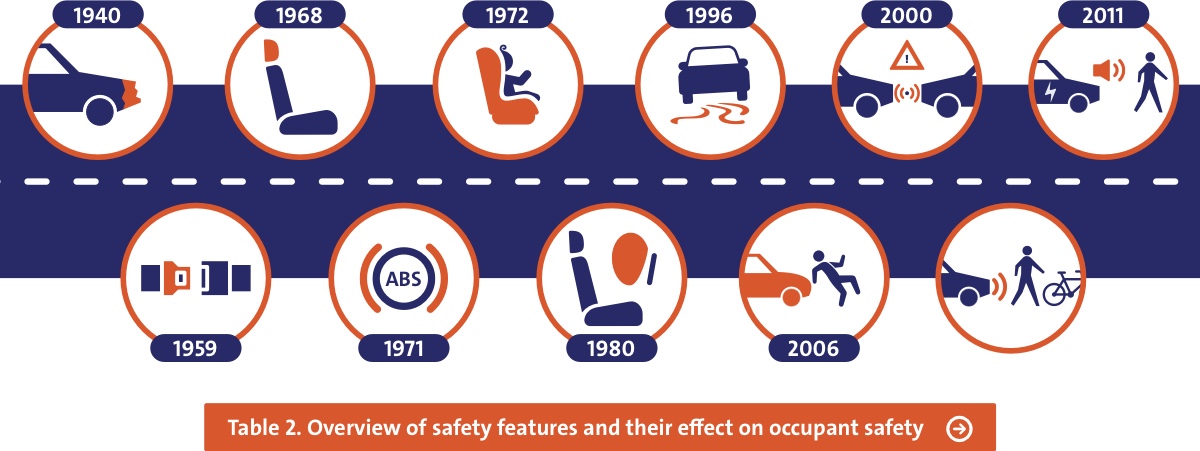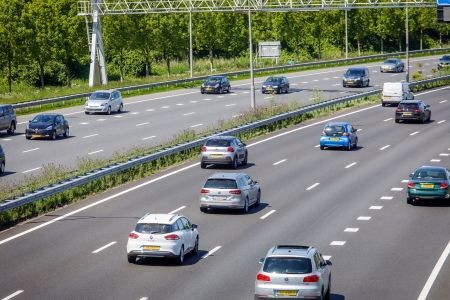Since the first cars came onto the market at the start of the 20th century, numerous developments have improved occupant safety. These developments are partly due to new/renewed safety features in cars and to legislation making (the use of) these safety features mandatory. Thus, a Swedish study of road crashes in the 1994-2018 period shows that occupants of new cars (construction year 2014-2018) run a 67% smaller risk of serious injury (AIS3+) and a 58% smaller risk of a fatal crash outcome, compared to occupants of older cars (construction year 1980-1984) [9].[i] Using existing overviews [8] [10], some important safety features are described in terms of launching dates, mandation dates in the Netherlands, and their known road safety effects (see Table 2). It should be noted that many cars had already been equipped with safety features before they became mandatory (see the question How does Euro NCAP contribute to road safety?). The figures about the effect of the safety features cannot be used to estimate the total number of road casualties saved, because some safety features impact on the same crash type. Additional information about the safety features in Table 2 can be found under the other questions in this fact sheet.
Table 2. Overview of safety features and their effect on occupant safety.
* Date of market launch adopted from Van Kampen et al. [8], excepting ABS [23].
** Sources of mandation dates for new cars: seat belts and mandatory usage in front [8], rear seat belts (Art. 5.2.47 (2) in: [3],mandatory usage seat belts in the rear (Art. 1 in: [24], head restraints (Art. 2 in: [25], child seats [8],ESC (Art 13 (5) in: [26], AEB (Appendix 2 (C9) in: [5]). The mandation date of safety features for type approval of new car models is usually two years prior to mandation of safety features for new cars.
*** UN/ECE guidelines are available in: [27].
**** ESC was originally introduced as ‘electronic stability programme’ (ESP).
[i] This study compares old and new cars in the current traffic context, which answers the question whether it is now safe to drive an old car. To answer the question whether a new car then was safer than a new car now, ideally crash risk of equally old cars is compared over different time periods (for example, using 1985 crash data of cars constructed in 1980 versus 2020 crash data of cars constructed in 2015).

